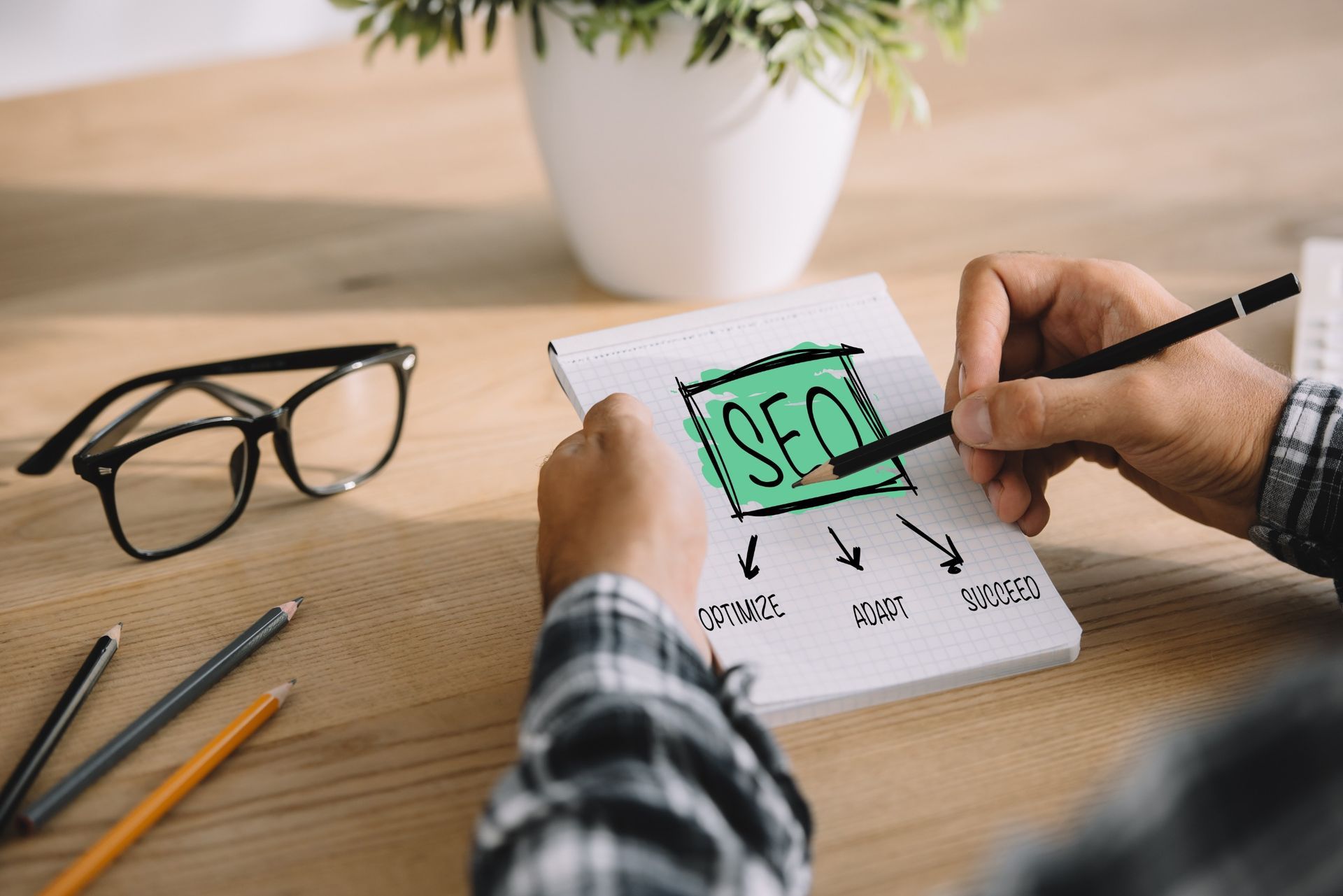Innovative Website Design Trends for 2024: What Businesses Need to Know
As we step into 2024, the digital landscape continues to evolve, driving businesses to stay ahead of the curve. One essential aspect that demands attention is website design. As the digital face of your business, your website needs to not only reflect your brand's identity but also keep up with the latest design trends to provide an engaging and seamless user experience.
In this blog post, we will delve into the innovative website design trends for 2024 that every business needs to be aware of. Buckle up and get ready to transform your website into a visually appealing and highly efficient online platform
Evolution of Website Design Trends From 2021 to 2024
From 2021 to 2024, website design trends have undergone significant shifts, reflecting the constantly evolving digital landscape. In 2021, minimalistic design and dark mode were all the rage, prioritizing user experience with sleek interfaces and reducing eye strain. However, as we moved into 2022, we observed a resurgence of retro aesthetics, with websites embracing vintage typography and color palettes evocative of the 70s and 80s.
2023 marked a shift towards interactive 3D elements and augmented reality (AR) experiences, with businesses leveraging these technologies to create immersive online environments for their users. This trend continued to gain traction in 2024, coupled with an emphasis on sustainability and social responsibility. Websites began incorporating eco-friendly design practices, such as energy-efficient programming and green hosting, to reduce their environmental impact. This trend reflects an increased consumer consciousness towards environmental sustainability.
In sum, the evolution from 2021 to 2024 has seen website design trends progress from minimalistic and retro aesthetics to more dynamic, interactive, and socially conscious designs.
How Advancements in Technology Will Impact Website Design in the Future
- Artificial Intelligence (AI) and Machine Learning (ML): These technologies will continue to play a significant role in website design. They will facilitate personalized user experiences by understanding user preferences and behavioral patterns.
- Virtual Reality (VR) and Augmented Reality (AR): As VR and AR technologies become more mainstream, they will increasingly be utilized in website design to create immersive online experiences.
- Voice User Interface (VUI): As the use of voice assistants and smart speakers grows, websites will need to incorporate VUI for seamless navigation and accessibility.
- 5G Technology: The advent of 5G will significantly improve website load times and performance, which will in turn influence the design elements that can be incorporated into a website.
- Cybersecurity: As cyber threats become increasingly sophisticated, security will become a crucial aspect of website design. Websites will need to ensure they have robust security measures in place to protect user data.
The Rise of Voice and Gesture-Based Interactions in Website Design
One of the most innovative trends in website design for 2024 is the rise of voice and gesture-based interactions. As the internet of things (IoT) continues to expand, so does the demand for more intuitive and hands-free ways to interact with digital platforms.
The integration of voice recognition technology into website design enables users to navigate and access information without the need for traditional input methods like typing or clicking. Similarly, gesture-based interactions leverage advanced sensors and AI to interpret physical movements as commands, creating a more immersive and engaging user experience.
However, implementing these features successfully requires a deep understanding of user behavior and ergonomics, as well as robust back-end support to ensure seamless operation. As we move forward, businesses will need to adapt and incorporate these innovative interaction methods into their website design strategies to stay relevant and competitive in the digital space.
The Integration of Augmented and Virtual Reality Into Websites for a More Immersive Experience
Augmented Reality (AR) and Virtual Reality (VR) have moved beyond the realm of gaming and have found their way into website design, providing a more immersive user experience. AR allows for the integration of digital elements into a live view, giving users a composite view of the real world with virtual elements overlaid. This results in a more interactive experience as users can manipulate these elements in real-time. On the other hand, VR offers a fully immersive digital experience, enabling users to explore virtual environments as if they were physically present.
Incorporating AR and VR into website design can significantly enhance user engagement. For instance, e-commerce websites can leverage these technologies to provide virtual try-on experiences or 3D product views, helping customers make more informed buying decisions. Similarly, educational websites can use AR and VR to create interactive learning experiences, transforming abstract concepts into tangible visualizations that improve comprehension.
However, successfully integrating AR and VR into websites requires careful planning and execution. Businesses need to ensure that these technologies align with their brand's identity and enhance, rather than distract from, the user experience. Moreover, due consideration must be given to technical requirements and the potential need for specialized design skills.
As we look ahead, AR and VR are set to redefine the boundaries of website design, promising a future where online experiences are more engaging, interactive, and immersive. Businesses that embrace and effectively implement these technologies will be well-positioned to captivate their audiences and stand out in an increasingly competitive digital landscape.
Creating Personalized and Adaptive Website Designs for Different Users and Devices
Creating personalized and adaptive website designs is another trend that's picking up speed in 2024, thanks to advancements in AI and machine learning technologies. Personalization in website design involves tailoring the user experience based on individual user behavior, preferences, and device types. For instance, a website may adapt its layout, color scheme, or content presentation based on the user's previous interactions or browsing history.
In addition to personalization, adaptive design is also crucial in today's multi-device world. Adaptive design involves creating websites that can seamlessly adjust their layout and functionality based on the device the user is accessing it from, whether it's a desktop, tablet, or smartphone. This eliminates the need for users to constantly zoom and scroll, providing a smoother, more user-friendly experience.
To implement personalized and adaptive designs, businesses must collect and analyze user data to understand their audience's preferences, behaviors, and device usage. Tools like Google Analytics can provide valuable insights into how users interact with a website. However, it's essential to prioritize user privacy and transparency when collecting and using data.
In conclusion, personalized and adaptive website designs can significantly enhance the user experience, drive user engagement, and ultimately lead to higher conversion rates. As technology continues to evolve, businesses that leverage these design trends will be better positioned to meet the changing needs and expectations of their audience.
Incorporating Sustainability Into Website Designs for Eco-Conscious Consumers
The growing awareness and concern for the environment have led to a surge in eco-conscious consumers. In light of this, incorporating sustainability into website design has emerged as a significant trend in 2024.
Web sustainability encompasses practices that minimize the environmental impact of a website, such as efficient coding, optimized images, and green hosting. Efficient coding involves writing clean and minimal code, which reduces the amount of data that needs to be processed. Similarly, optimizing images can significantly reduce the amount of data transferred, leading to faster load times and lower energy use. Green hosting, on the other hand, involves choosing web hosting providers that utilize renewable energy or carbon offsets.
In addition to these technical aspects, sustainability in website design also extends to the content and user interface. This could involve creating a clean and minimalistic design, which not only improves user experience but also requires less energy to load. Additionally, including content that promotes sustainable practices or features a company’s eco-friendly initiatives can further resonate with eco-conscious consumers.
Incorporating sustainability into website design not only reduces a business's digital carbon footprint but also enhances its reputation among eco-conscious consumers. As environmental consciousness continues to grow among consumers, businesses that prioritize web sustainability will be better equipped to meet these evolving expectations and stand apart from competitors. As such, sustainability is no longer just a societal issue, but an essential component of a business's online presence and overall brand strategy.
About Lead Monkey Marketing LLC
Lead Monkey Marketing LLC is a forward-thinking digital marketing agency dedicated to helping businesses navigate the ever-evolving digital landscape. We specialize in website design, digital advertising, search engine optimization, and social media marketing. Our goal is to provide businesses with an online presence that is visually appealing, user-friendly, and highly effective in driving growth.
At Lead Monkey Marketing LLC, we combine creativity, innovation, and strategic planning to create digital solutions that align with our clients' business objectives and resonate with their target audience.
For further information or to start your journey towards an engaging and effective online presence, please feel free to get in touch with us. You can reach us via our contact page. Our team of digital marketing experts looks forward to assisting you in achieving your business objectives.
Lead Monkey Marketing
We are the premier digital marketing solution in Trenton. Contact us today to get your free, no-obligation consultation!
Contact info
1630 Waverly Street, Unit 2 Trenton, MI 48183
United States
Menu
Services
All Rights Reserved | Lead Monkey Marketing LLC




